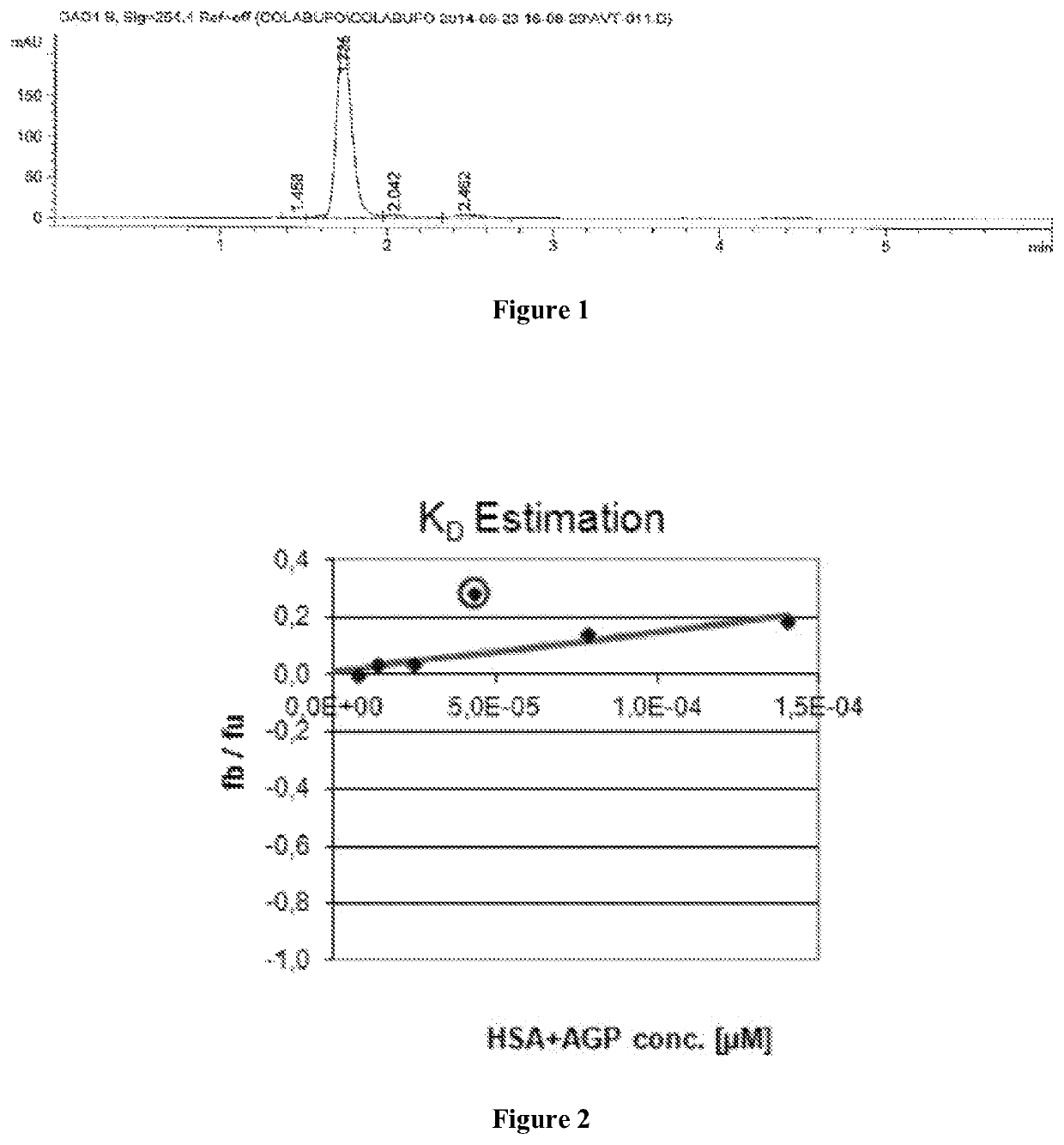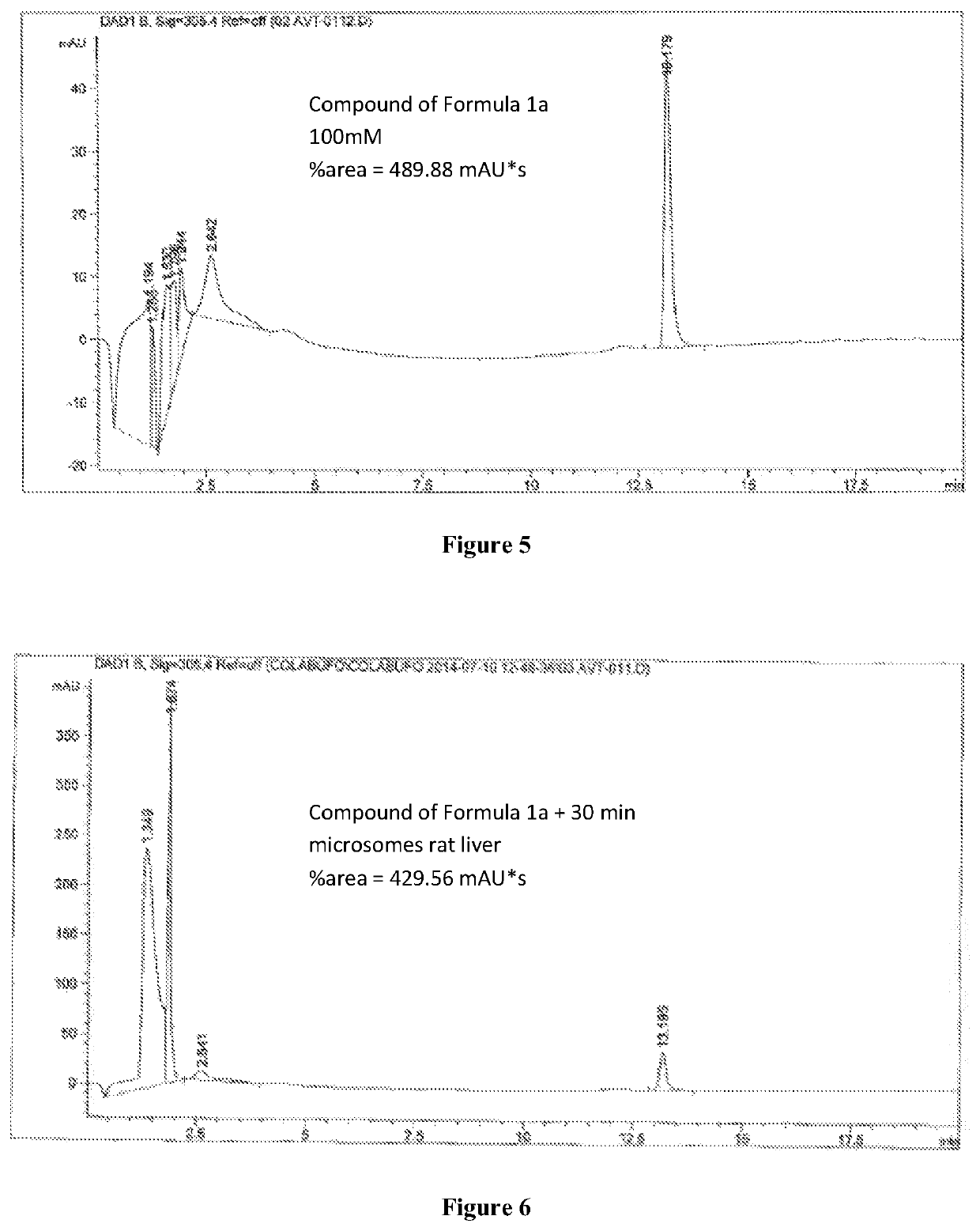Anthranilic acid derivatives
anthranilic acid and derivative technology, applied in the field of anthranilic acid derivatives, can solve the problems of ineffectiveness and loss of efficacy of many/certain drugs, no method or test available to assess or detect the cause of multi-drug resistance in patients, and no tracer is applied to drug development or currently used as routine clinical diagnostic tool, so as to improve survival outcomes and overall quality of life, and ensure unnecessary toxicities
- Summary
- Abstract
- Description
- Claims
- Application Information
AI Technical Summary
Benefits of technology
Problems solved by technology
Method used
Image
Examples
example 1
Preparation of 3-(benzyloxy)-4-methoxybenzaldehyde (Compound 2)
[0146]A stirred solution of Compound 1 (250 g, 1.645 mmol, 1 eq) in methanol (3 L), at rt was added to potassium carbonate (340.4 g, 2.467 mmol, 1.5 eq), and sodium iodide (24.7 g, 0.164 mmol, 0.1 eq) and benzyl chloride (246 mL, 2.138 mmol, 1.3 eq). The reaction mixture was stirred for 20 minutes and heated to reflux (60-65° C. internal temperature) and maintained for 16 h reflux. The reaction progress was monitored by TLC, and continued till complete consumption of Compound 1. The reaction mixture was then cooled to rt and quenched with ice cold water (7 L) and gummy liquid was formed. The water layer was decanted. After that, water (2 L) was added to the reaction mixture and stirred for 2 h and filtered. The compound was washed with methanol (500 mL) and pet ether (2×500 mL). The compound obtained was dried. The final compound obtained was Compound 2 (1125 g, 94.8%) as a white solid (TLC system: 50% CHCl3 / pet ether, R...
example 2
Preparation of (E)-2-(benzyloxy)-1-methoxy-4-(2-nitrovinyl)benzene (Compound 3)
[0147]A solution of compound 2 (385 g, 1.591 mmol, 1 eq) in acetic acid (2.5 L, 10 v), at rt, was added to ammonium acetate (306.5 g, 3.977 mmol, 2.5 eq), and stirred for 15 minutes. Nitromethane (255.5 mL, 4.773 mmol, 3 eq) was then added in drop wise manner at rt to this solution till the colour changes from colorless to light yellow. After completion of addition of nitromethane, the reaction mixture was stirred for 30 minutes at rt and heated to reflux (105-115° C. inner temperature). The reaction mixture was refluxed for 4 h, and filtered. The solid was washed with constant stirring in methanol for 30 min and filtered. The compound was then washed with pet ether (2×1 L) dried. The final compound obtained was Compound 3 (405 g, 89.3%) as white solid (TLC system: 50% CHCl3 / DCM, Rf: 0.8). 1H-NMR (400 MHz, DMSO-d6): 8.2 (d, J=13.6 Hz, 1H), 8.07 (d, J=13.6 Hz, 1H), 7.64 (d, J=1.6 Hz, 1H), 7.47-7.34 (m, 6H)...
example 3
Preparation of 2-(3-(benzyloxy)-4-methoxyphenyl)-ethanamine (Compound 4)
[0148]A stirred solution of compound 3 (400 g, 1.403 mmol, 1 eq) in dry THF (3 L) was added to suspension of lithium aluminum hydride (80 g, 2.10 mmol, 1.5 eq) in THF (1 L) drop by drop at −30° C. to −10° C. while ensuring that inner temperature of the reaction should not go above −10° C. After completion of addition of the starting material, the reaction mixture was slowly warmed to rt and stirred for 20 h at rt. The reaction progress was monitored by TLC, showed complete consumption of compound 3. The reaction mixture was cooled to −30° C. After that, water (80 mL), 15% NaOH aq. solution (80 mL) and water (240 mL) were added to reaction mixture drop by drop while always maintaining internal temp −10° C. Thereafter reaction mixture was warmed to rt. and stirred for 3 h to ensure quenching of excess LiAlH4. The reaction mixture was then filtered over celite bed. The solid was washed with THF (5 L). The combined ...
PUM
| Property | Measurement | Unit |
|---|---|---|
| time | aaaaa | aaaaa |
| temperature | aaaaa | aaaaa |
| inner temperature | aaaaa | aaaaa |
Abstract
Description
Claims
Application Information
 Login to View More
Login to View More - R&D
- Intellectual Property
- Life Sciences
- Materials
- Tech Scout
- Unparalleled Data Quality
- Higher Quality Content
- 60% Fewer Hallucinations
Browse by: Latest US Patents, China's latest patents, Technical Efficacy Thesaurus, Application Domain, Technology Topic, Popular Technical Reports.
© 2025 PatSnap. All rights reserved.Legal|Privacy policy|Modern Slavery Act Transparency Statement|Sitemap|About US| Contact US: help@patsnap.com



